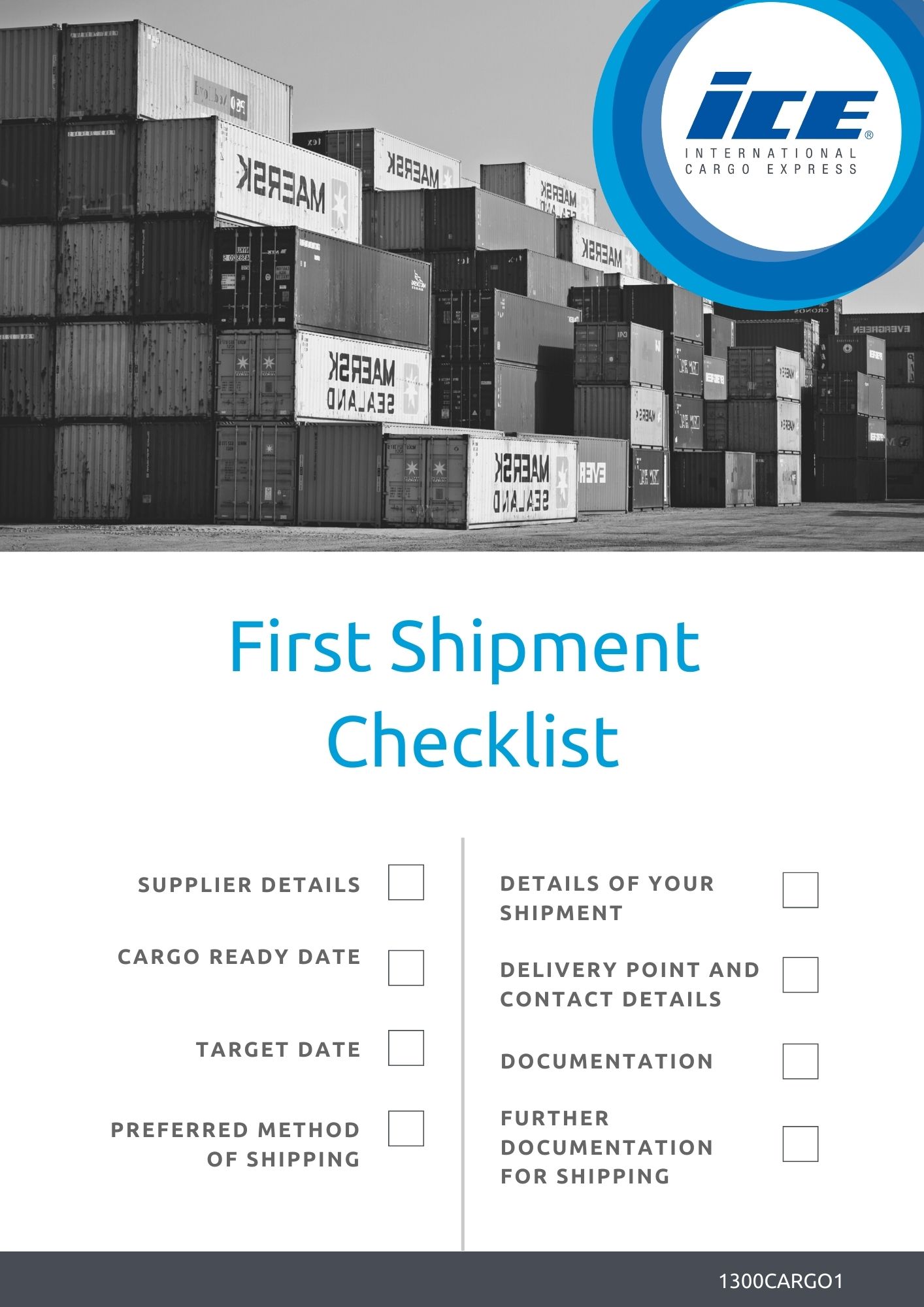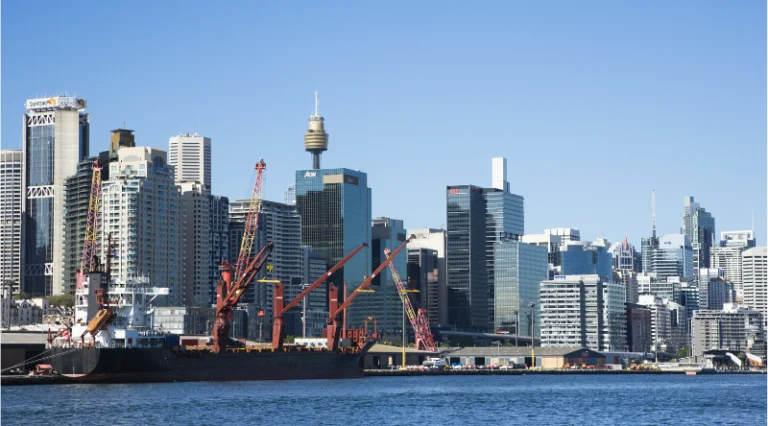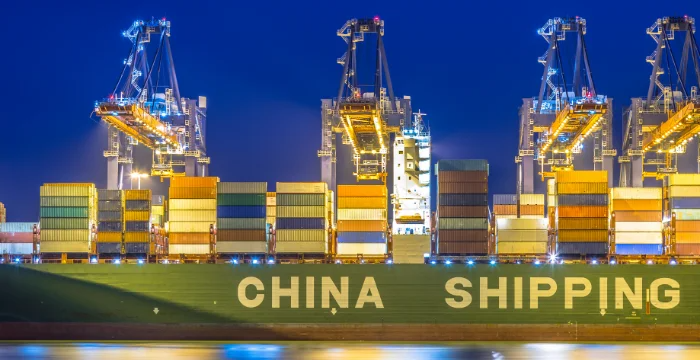Importing from China to Australia: Customs, Tariffs and Regulations Explained
October 28, 2022 Uncategorized

Before importing to and exporting from China, it is important to know what regulations and customs tariffs apply to your shipment. Without taking the time to understand this, you may be surprised at hidden costs levied along the way and unnecessary (and avoidable) charges.
Below, we’ll discuss:
- How your shipment to or from China may be impacted by customs and tariffs
- The different customs authorities and their roles in handling your cargo arriving from China
- The regulations you’ll need to comply with when shipping to and from our northern neighbour.
Let’s dive in!
Customs and regulatory authorities in Australia: who is responsible?
When shipping into Australia it is useful to know who the relevant authorities are that will be dealing with your cargo.
Australian Border Force
The Australian Border Force (ABF) – often referred to as ‘customs’ – was established in July 2015 as a result of a merger between the Australian Customs and Border Protection Service and the Department of Immigration and Border Protection. The ABF, which today forms part of the Department of Home Affairs, has responsibilities over border protection and control enforcement. They’re in charge of customs at both airports and seaports.
The ABF have published a range of handy guides on the rules and regulations that relate to importing particular goods, ranging from motor vehicles and yachts to animals and human remains.
Department of Agriculture, Water and the Environment
This Department is responsible for clearing and treating imported goods if they pose a biosecurity threat. Imports entering into Australia will often be cleared by the Department relying on documentation and declarations the importer provides. Without such declarations, the Department will need to open and inspect cargo.
In order to avoid delays and inspection charges, we advise all importers to comply with the Department’s documentary requirements for clearance. Whilst some of the documents are not mandatory, failure to provide appropriate documentation for your shipment may lead to additional charges being levied on your shipment.
Anti-Dumping Commission
The Anti-Dumping Commission forms part of the Department of Industry, Science, Energy and Resources. The Commission manages Australia’s anti-dumping and countervailing system, with the role of investigating claims that goods have been ‘dumped’ in Australia and are injuring domestic industry. For a discussion about ‘dumping’, including the anti-dumping duty that might be payable in some circumstances, we suggest you read our blog on Anti-Dumping Duty.
Businesses are able to apply to the Commission for ‘anti-dumping’ duties to be imposed on a third party if they are causing ‘material injury’ to their industry. The Commission has 20 days to consider these applications.
Department of Free Trade and Affairs
This Department is responsible for managing Australia’s free trade agreements with other countries. Australia has free trade agreements with many countries including China, the United States, New Zealand and Singapore.
China is Australia’s most important trading partner. The China-Australia Free Trade Agreement (ChAFTA) was signed between Australia and China in 2017. The ChAFTA has reduced tariffs by a significant degree, providing a wealth of benefits for Australian businesses. We recommend reading our Guide to the CHAFTA for importers and exporters for further information.
What regulations do I have to follow if importing from China?
1. Ensure your goods aren’t prohibited
Before entering into any arrangements to import particular goods into Australia, make sure those goods aren’t prohibited. Otherwise, the ABF may seize those goods at the border (and possibly destroy them). Prohibited goods include chemical weapons, biological agents, asbestos, and – curiously – any goods bearing the word “ANZAC”. The ABF has published a full list of prohibited goods on their website.
2. Ensure you have the correct documentation
When importing your goods make sure you have all the documentation you need. This includes:
- A commercial Invoice – a document that states who is buying the goods from whom, including the agreed shipping terms;
- Packing List – this document outlines all the details of your freight such as how your goods have been packed. This allows for reduced inspection times in the event some cargo needs to be looked at as it can be easily located within your consignment
- Packing Declaration (for sea freight only) – These are mandatory for shipping into Australia, and declare what kind of material has been used to pack goods. If the material contains wood, straw or bark, the goods will require a fumigation/treatment certificate;
- Certificate of Origin, which declares details of the country in which your goods are manufactured. You can use certificates of origin to benefit from free trade in China, such as the so-called ‘preferential certificate’ (or a ‘ChAFTA Certificate’) allowing you to pay lower amounts of tariffs on goods imported from China.
Bonus resource! A quick and easy description of each essential document you need for a shipment:

3. Get the right ‘HS Code’
The Harmonised System (HS) Code is an internationally recognised 6-10 digit figure that is specifically assigned to certain goods by customs authorities. There are thousands of these codes, with each one describing a particular type of product. It’s important to assign the correct code to your import, as this impacts the tariffs and customs you’ll have to pay when importing those goods under ChAFTA.
Ask your supplier to provide the HS code for each item on your commercial invoice. After that, ask your broker for a customs ruling to ensure the codes allocated are correct. Failure to place the correct HS Codes may lead to paying unnecessary tariffs or, alternatively, unlawfully avoiding tariffs that you must pay.
4. Check for anti-dumping duties
Make sure to ask your broker to check if an anti-dumping duty applies to your import. As described above, this can be done by making an application to the Anti-Dumping Commission.
5. Request a Certificate of Origin from your Supplier
As also discussed above, you can benefit a great deal from free trade with China by requesting a certificate of origin from your supplier when shipping. This may include a ‘ChAFTA certificate’ that allows you to pay a reduced tariff.

What regulations do I have to follow if exporting to China?
When exporting to China, you’ll have to comply with a range of regulations imposed by the Chinese Government. There are three main taxes that apply to companies exporting products to China. This includes paying:
1. Value added tax
Since 1 April 2019, businesses exporting goods to China will need to pay a value-added tax (VAT) of either 9% or 13%.
You’ll have to pay the 9% tax for agricultural and utility imports, with the 13% tax applied to everything else.
It’s important to keep an eye on this tax, as it tends to regularly change. The VAT was initially at 11% and 17%, but this then decreased to 10% and 16% in May 2018 before changing to the current rates.
2. Consumption tax
This tax is imposed on businesses who manufacture and export “taxable products”. These are products that are taxable under China’s own domestic consumption tax laws. This includes items that are harmful to human health like tobacco, but also luxury goods and high-end products (including items like jewellery and cars).
The specific rate of customs tax will change depending on the exact product exported to China.
3. Import duties
China imposes import duties on foreign goods exported into China, with over 8,500 items taxed. The Chinese Government’s 2019 Customs Tariff Implementation Plan (in Chinese) provides a complete and comprehensive list of such goods.
There is a range of import duties you should be aware of when exporting your goods to China. Luckily, because of the ChAFTA, many of these duties have been lowered. It is important to ask your freight forwarder the exact duties you have to pay as part of your shipment or consider if the importer will be paying these on your behalf.
These import duties include:
- Most-favoured-nation (MFN) duties
- come from countries with trade agreements containing MFN clauses (which includes Australia having signed ChAFTA); and
- originated from China.
- Conventional duties
Conventional duties apply to goods from countries that have entered regional trade agreements containing preferential provisions on duty rates with China. Regional free trade agreements are simply trade agreements with more than two countries, including the Trans-Pacific Partnership and the Asia-Pacific Trade Agreement.

From 1 January 2019, the conventional rates for Australia have reduced
- Special preferential duties
Special preferential duty rates apply to imported goods from countries with trade agreements that have such terms with China, which would include Australia being part of ChAFTA. They are typically lower than the rates of MFN and conventional duties. This rate was reduced further in 2019.
- Tariff rate quota duties
Under schemes of tariff-rate quota, goods imported within the quota enjoy a lower tariff rate. However, goods imported beyond the quota are subject to higher tariff rates.
- Temporary duties
China sometimes puts in place temporary duties for specific imported goods for the purpose of boosting imports, which is necessary to meet domestic public demand within China. Some of these goods in 2019 included, for example, diapers and sunglasses.
- General duties
General duties are payable when goods are coming into China from countries that aren’t covered by a free trade agreement or treaty. They’re also applied to goods coming from unknown places of origin.
To Recap: Key Points
If you are importing or exporting from China, be aware of the below:
- Ensure your imported goods are not prohibited by checking the ABF’s full list of prohibited goods
- Have the following essential documents on hand: commercial Invoice, Packing List, Packing Declaration and Certificate of Origin
- Ask your supplier to provide the HS code for each item on your commercial invoice and your broker to revise
- Ask your broker to check if an anti-dumping duty applies to your import
- Request a Certificate of Origin from your Supplier or a ChAFTA certificate
- If exporting to China, make sure you pay the value-added tax (VAT) and check with your forwarder if your goods fall under China’s “taxable products”.
One Last Tip
When importing from China, you may feel it’s just easier to let your supplier in control of the freight process arranging transport, insurance, customs clearance and delivery. However, when given the opportunity, your freight forwarder can potentially save you money, give you valuable advice based on the Australian market and offer real-time support in case anything goes wrong.
The best way to ensure your first shipment is handled with ease is to speak to one of our consultants for free about your requirements. Chat to one of your team and we can help you with your next important of goods from China.
Request A Quoteor call us on 1300 227 461
Recommended For You

We Consult. We Plan. We Deliver.
- CONSULT – We discuss your specific needs.
- PLAN – We develop a bespoke tailored plan that is cost-effective & efficient.
- DELIVER – We manage your shipment and keep you updated from beginning to end.


